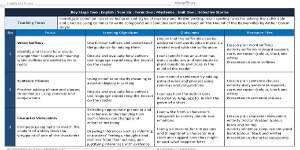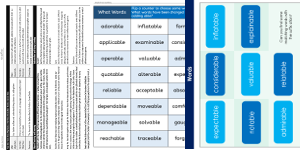Unit A – Detective Stories

This English scheme of work for Key Stage Two gets the children to investigate common features and styles of mystery and thriller writing, learn spelling rules for adding the suffix able and practise using commas to write compound and complex sentences based on The Hound of the Baskervilles by Arthur Conan Doyle.

Investigate common narrative features and styles of mystery and thriller writing, learn spelling rules for adding the suffix able and practise using commas to write compound and complex sentences

Lesson One : Word Suffixes
Identify and record how words change their spelling and meaning when suffixes are added to word roots to use when describing events that could happen in a detective story

Lesson Two : Sentence Clauses
Practise adding a range of phrase and clauses to different sentences from a detective story using commas and conjunctions to indicate characters, settings and narrative events

Lesson Three : Character Viewpoints
Select and compose a selection of paragraphs to match the content of a detective story written from the viewpoint of one of the characters

Lesson Four : Story Paragraphs
Model and record how to convert a selection of paragraphs from a detective story from the first to the third person to indicate the sequence of narrative events

Lesson Five : Story Puzzles
Identify and record how to write an extra section to match the structure and format of a detective story to create puzzles in the mind of the reader about what happened
-

Maths Arithmetic Assessment
Assess abilities in solving arithmetic number problems for addition, subtraction, multiplication and division when working with informal and formal written calculations
-

Environment
Identify and describe some of the special landscapes and locations that can be found in the world and reflect on how they can be protected and preserved for the future
-

Silent Letter Words
Explore and illustrate the meanings and spellings of some different words with silent letters when using them in a range of topics and scenarios
-

Complaint Letters
Explain and model how to format and structure writing when composing letters of complaint about different issues and scenarios
